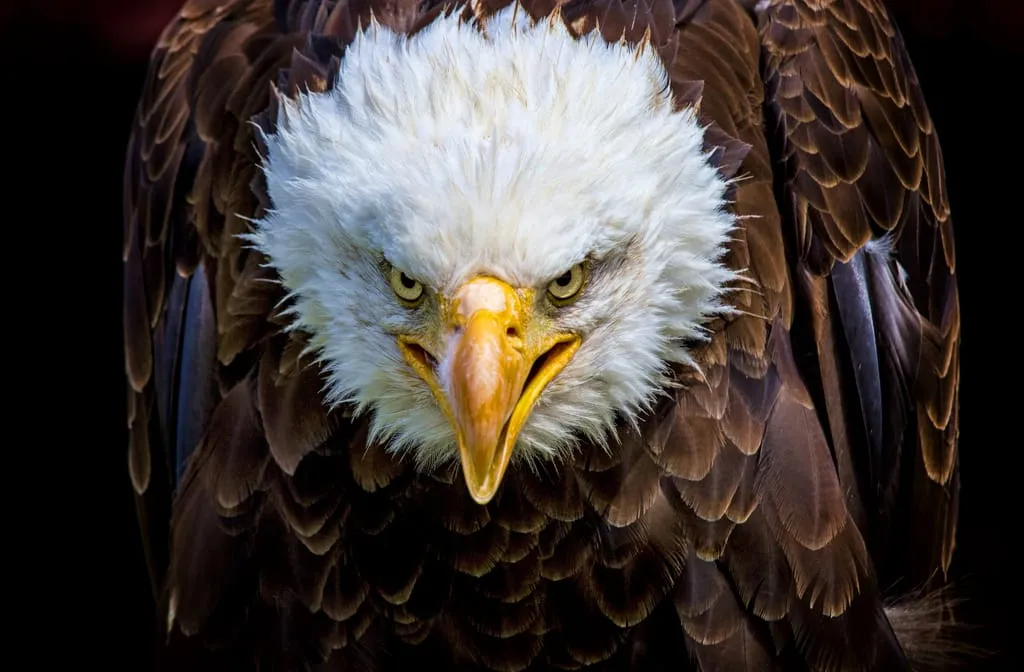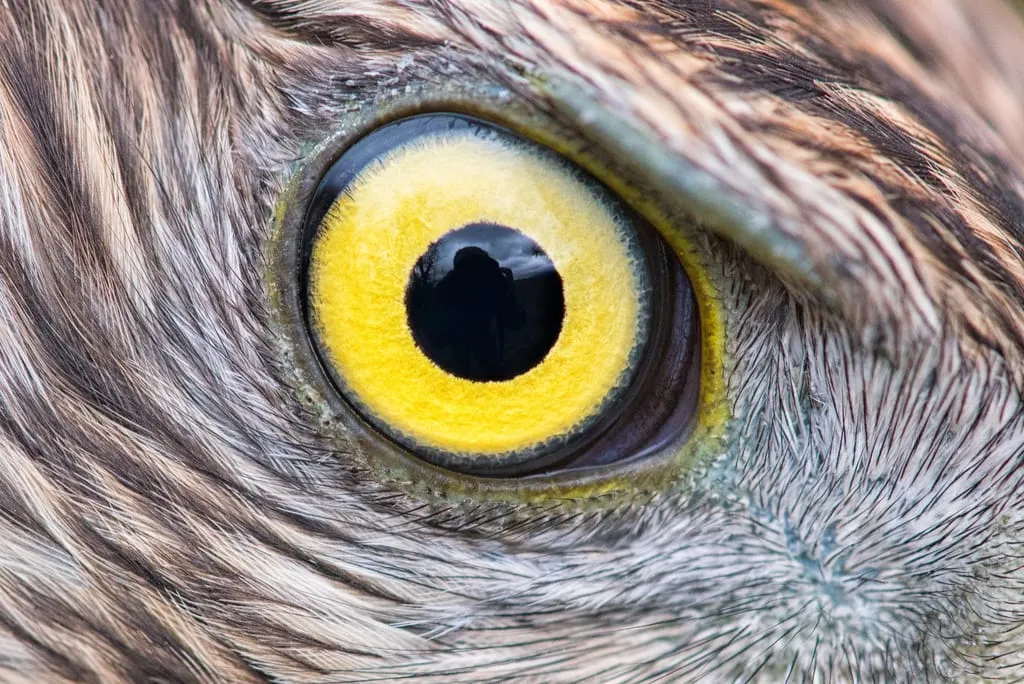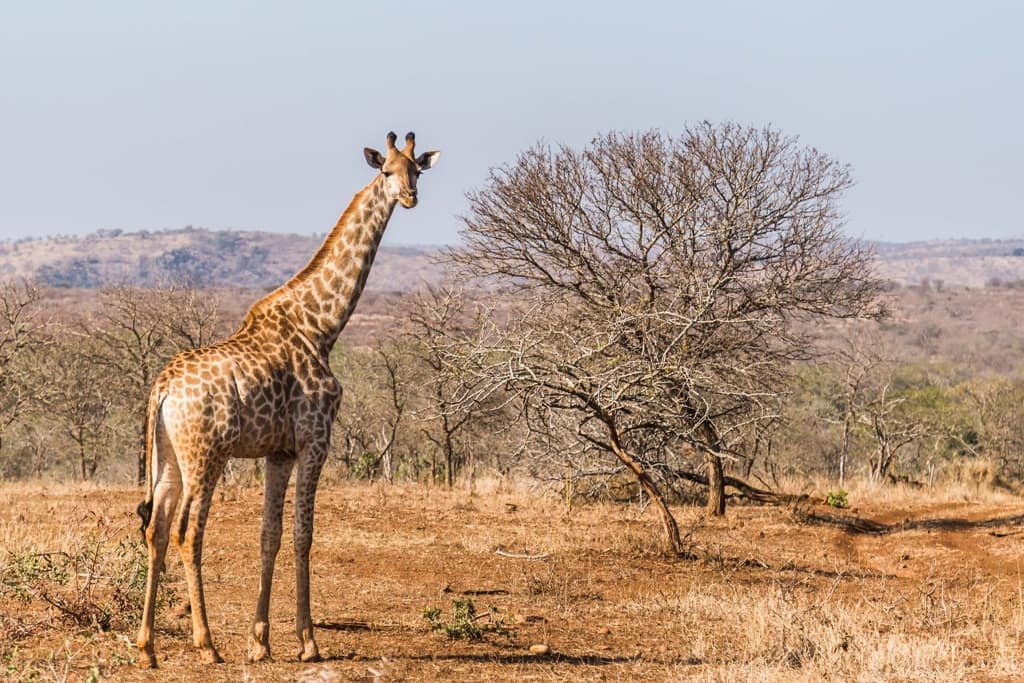The eagle is a majestic bird of prey, renowned for its impressive size, powerful build, and keen eyesight. Belonging to the family Accipitridae, eagles are found worldwide, predominantly in Eurasia and Africa. These large birds are characterized by their hooked beaks, strong muscular legs, and sharp talons, making them formidable hunters. Eagles are often symbols of freedom, strength, and bravery, deeply embedded in the cultural and national emblems of various countries. They primarily feed on fish, small mammals, and other birds, showcasing remarkable hunting skills. Eagles build their nests, known as eyries, in high places like cliffs or tall trees. Their incredible vision, almost four to eight times stronger than that of the average human, allows them to spot prey from great distances. Eagles also play a vital role in their ecosystems as apex predators, helping maintain balance in their natural habitats. Eagles are fascinating birds, and here are some interesting facts about them:
- Eagles are large birds of prey that belong to the family Accipitridae. There are over 60 species of eagles found around the world, with the bald eagle and golden eagle being two of the most well-known in North America.
- Eagles are apex predators and are known for their keen eyesight, powerful beaks, and strong talons. They have a keen sense of vision, which allows them to spot prey from great distances.
- Eagles can be found on every continent except Antarctica. They inhabit a wide range of environments, from forests and mountains to deserts and coastal areas.
- Eagles are carnivorous birds and primarily feed on a diet of fish, birds, and small mammals. Some eagles are known to hunt larger prey like deer and monkeys.
- The bald eagle is the national bird and symbol of the United States. It is known for its distinctive white head and tail feathers. Despite its name, it is not bald; the name actually comes from the old English word “balde,” meaning white.

Bald Eagle - Golden eagles are one of the largest eagles in the world. They have brown feathers with golden-brown plumage on the back of their heads and necks.
- Eagles build large nests, often in high places like cliffs or tall trees. They tend to mate for life, and some eagle species engage in elaborate courtship displays. Females usually lay one to three eggs, and both parents take turns incubating the eggs and caring for the young eaglets.
- Eagles can have relatively long lifespans for birds, with some living up to 30 years or more in the wild.
- Eagles face various threats, including habitat loss, pollution (such as lead poisoning from ingesting lead ammunition or fishing tackle), and illegal hunting. Conservation efforts are in place to protect these magnificent birds.
- Eagles have been symbols of power, strength, and freedom in various cultures throughout history. They are often featured in national flags, emblems, and heraldry.

Angry Eagle - Some eagle species, like the bald eagle, are migratory birds. They travel long distances between their breeding and wintering grounds in search of food.
- Eagles are powerful fliers and can reach impressive speeds when hunting or soaring. They are known for their aerial acrobatics and can perform breathtaking dives and maneuvers.
- The size of eagles varies by species, with the largest, like the Philippine eagle, having a wingspan of over 7 feet (2 meters) and the smallest, such as the South Nicobar serpent eagle, having a wingspan of around 2 feet (0.6 meters).
- Eagles are known for their territorial behavior. They often defend large hunting territories, and intruders are met with fierce aerial displays and vocalizations.
- Eagles have large eyes with a high number of light-sensitive cells in their retinas, which enhances their vision. They can see in full color and have binocular vision, allowing them to judge distances accurately.

Eye of Eagle - The talons of eagles are incredibly strong and sharp. They use these talons to grasp and immobilize their prey while in flight.
- Eagles are capable of flying silently, thanks to the structure of their feathers, which reduces noise when flapping their wings. This stealthy flight helps them approach prey without being detected.
- Despite their similar names, the bald eagle and the African fish eagle are not closely related. The bald eagle is native to North America, while the African fish eagle is found in various parts of Africa. They both share a preference for hunting fish.
- Eagles are skilled hunters and use a variety of hunting techniques. Some species, like the bald eagle, snatch fish from the water’s surface with their talons, while others, like the martial eagle, are known for capturing larger mammals with powerful strikes.
- While some eagle species are considered of “Least Concern” in terms of conservation status, others, like the Philippine eagle, are critically endangered due to habitat destruction and hunting.

Philippine eagle - The harpy eagle, found in Central and South America, is one of the longest-lived eagle species, with individuals known to live up to 35 years in captivity.
- Besides the United States, the eagle is a symbol of many other nations and regions. For example, it is the national bird of Mexico and is featured on the Mexican flag.
- Eagles engage in elaborate courtship displays, including aerial acrobatics and synchronized flying. These displays help strengthen the bond between mates.
- The Harpy Eagle and the Steller’s Sea Eagle are among the largest eagles in terms of body size. The Steller’s Sea Eagle, in particular, has the heaviest beak of any eagle species.
- Some eagle species undertake long-distance migrations to find food. For example, the Steppe Eagle migrates from its breeding grounds in Russia and Kazakhstan in winters to Africa.

- Eagles play a crucial role in their ecosystems by controlling populations of their prey species. Their presence helps maintain the balance of the food chain.
- Eagles are known for their strong beaks, which they use to tear apart prey. They often eat the meat of their prey, leaving behind bones and other indigestible parts.






